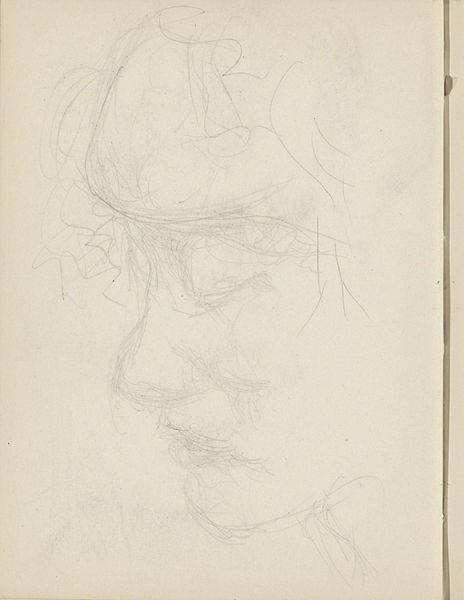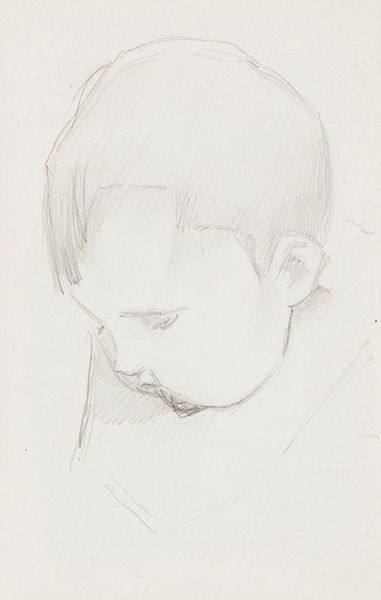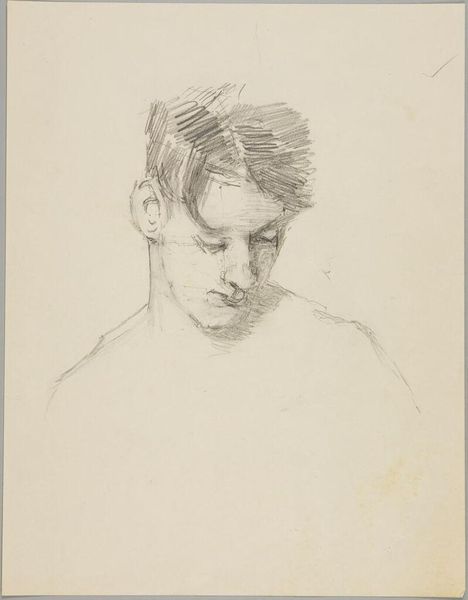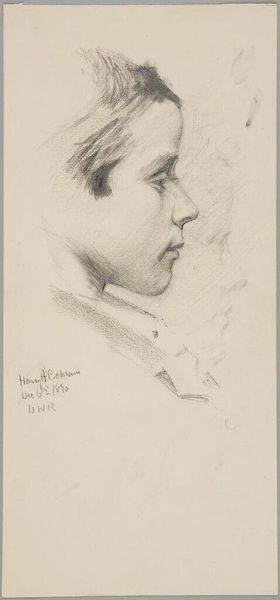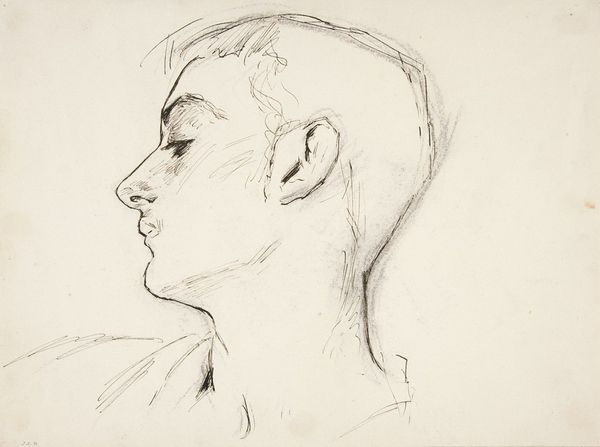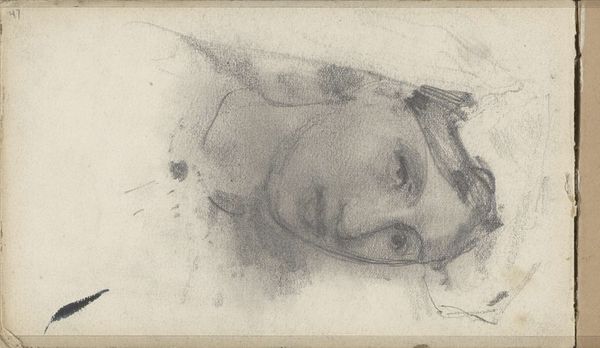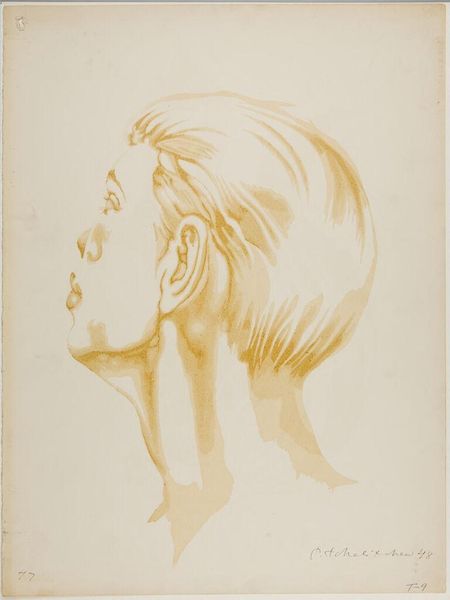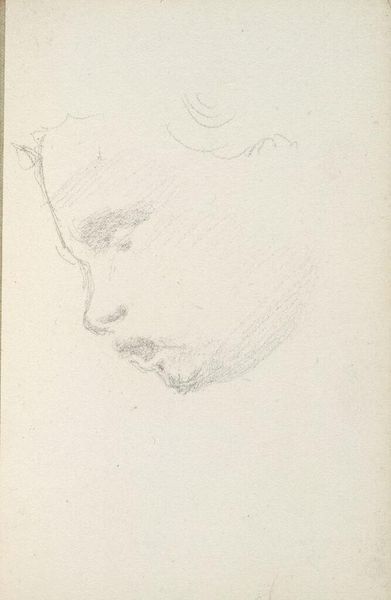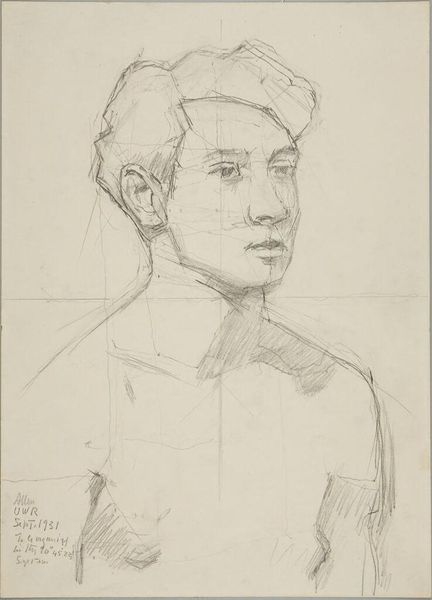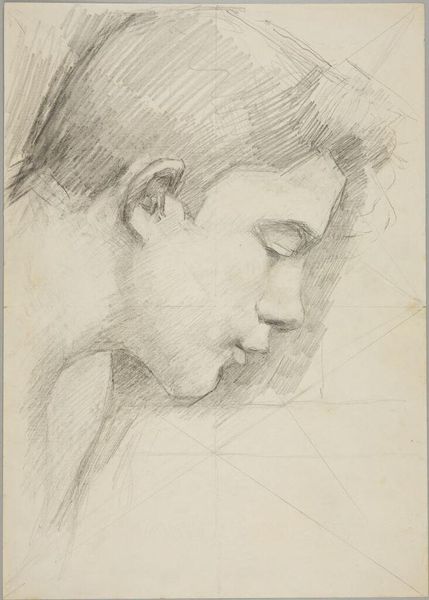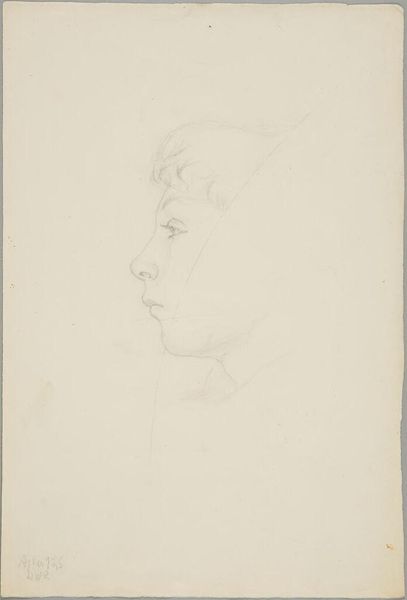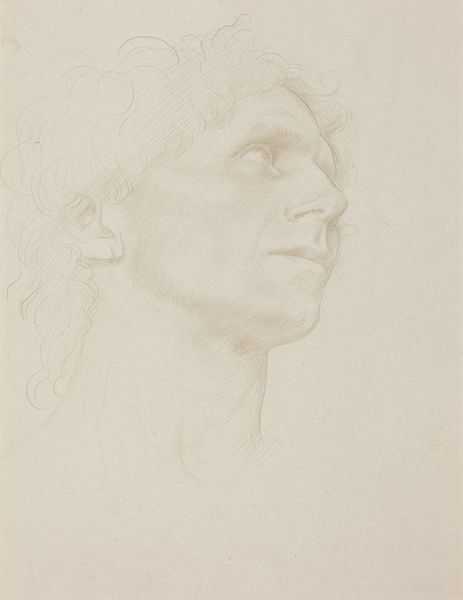
drawing, pencil
#
portrait
#
drawing
#
pencil drawing
#
pencil
#
portrait drawing
Copyright: Public Domain: Artvee
Curator: What a subtle drawing! It projects such quiet introspection. Editor: Indeed. We’re looking at “Mauritz Maexmontan, kasvot” by Helene Schjerfbeck, created between 1878 and 1879. It's a pencil drawing, a medium through which Schjerfbeck often captured striking portraits. Curator: The cross-hatching around the jaw and the ear is particularly effective. See how those denser concentrations of graphite define the planes of the face. Editor: The simplicity of the medium contrasts with the era’s artistic grandiosity. Schjerfbeck produced this while still a student, it’s thought. There's an immediacy to pencil, bypassing the complexities of painting to capture a more direct essence of the subject, even, perhaps, as a commentary on the nature of portraiture at the time. Curator: I'm fascinated by how she uses suggestion rather than explicit detail. The top of the head is merely implied. That incompleteness draws the eye into what *is* rendered—the nose, the lips, the gentle curve of the closed eye. Editor: Right. And consider how the paper itself contributes. The pale background becomes an active space, creating an almost dreamlike quality, as if we're observing a fleeting thought rather than a concrete individual. It also hints at the societal constraints women artists were under, often having less access to resources like paints. Curator: Agreed. The reduction encourages a concentrated contemplation of form. Look at the light playing across the bridge of his nose. Editor: There's also an incredible sense of vulnerability, especially knowing the time period it came from when portraying male sitters were seen to be objects of great national pride. The work quietly challenges these notions. Curator: It's a compelling study in understatement. This subtle choice reinforces a reflective, solitary mood, emphasizing the beauty in simplification. Editor: Absolutely. Looking back on it now, seeing this early piece through the lens of her later works and their context, this piece provides such a great framework into the themes she kept visiting.
Comments
No comments
Be the first to comment and join the conversation on the ultimate creative platform.
